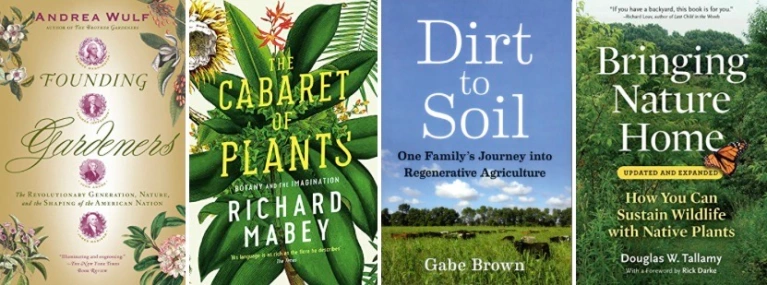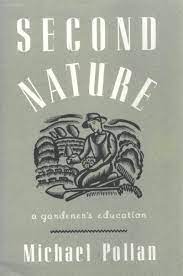It’s funny how the books I’ve picked for this group work together—but they do. In a funny way this group shows more about me as a plantsperson and horticulturist than many of my posts do.
My garden is a laboratory… where I happen to work and play a lot.
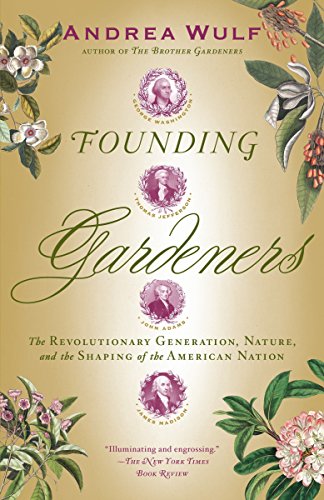

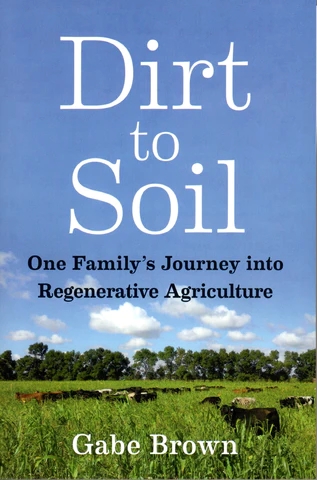
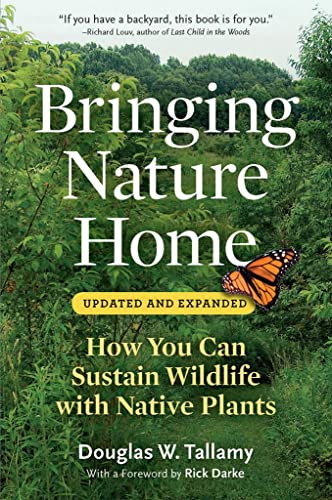
1-Founding Gardeners by Andrea Wulf (published in 2011)
This book is a favorite. It shows American history from a fresh perspective, and it’s one that makes a lot of sense to me now, connecting the past to the present. It is well researched and I kind of expected it to be after hearing the author speak a few years ago here in Portland about her work The Invention of Nature: Alexander von Humbolt’s New World.
Even though I was not yet physically well when I went to hear her speak, her talk truly inspired me to strive harder to do more and to fight to feel better, so I very much have an emotional attachment to the work of this writer. Add to that, a good friend from college was awarded a Humboldt Research Fellowship, and again, my heart spills over a bit for this historian.
Described in this review as a revisionist work, I’m more than ok with that, but it’s by no means a radical interpretation. It just shows another side of men we are familiar with, and as a young country, it’s important to shade them in bit by bit as time passes.
As a horticulturist from the American West—the Pacific Northwest to be precise—a descendent of many original colonists, I know very little about the original colonial states because my family moved westward so long ago. We don’t cling to tradition so much here, although that’s changing more and more. This book helped me to better understand other horticulturists in older parts of the country, ones I interact with online, and am meeting with in person more and more now.
I appreciate this book for giving me a better framework historically. I need this as I will be visiting Monticello and Mount Vernon for the first time this year, and I hope to continue to visit other parts of the country in the years to come. I feel like this book has helped to create a much needed context for me, and I can do more “shading” in as needed as I begin to experience these places more.
2-The Cabaret of Plants by Richard Mabey (published in 2015)
Ahhh, a title that makes me feel awkward, but sex sells. This romp through the stories of many plants by a British naturalist was fun, but it was a wild ride from here to there. Like the other books in the group, it shows yet another facet of how I see the plant world that I work and live in. Honestly, it shows how many of my peers and mentors see things too. One minute we’re talking about this plant, and then the next, we’ve moved on to another from a different continent or region. The key is knowing the places, and keeping up.
This book was entertaining, and to grasp its overall appeal, all I can stress is that is shows you how to see plants maybe in a different and geekier way than you already do. So many folks first get into houseplants and containers they plant when they land in their first cozy home spaces, but their interest often stops there, on the pages of magazines, books, or online sites, with photo they’d like to imitate, idealized aspirations. This book will take you to “the next level” so-to-speak. It transports you up and beyond the pages into the deeper “lives” of plants.
I hate to say that this book anthropomorphizes plants, but it does give them a voice, one which I’m much more familiar with than that of a Garden Expert or Influencer. This book shows you a more professional world of plants, and honestly, one that I live in much more than I’d previously realized as I’m beginning to interact more with more consumers and folks outside of my work circles.
If you want to know more about the enthusiasm I so embrace, and the crazy connections made by my friends and I, then this is a great book for that. I very much enjoyed the writing, and I encourage you to read this great review of the book and its charm in The New York Times.
3-Dirt to Soil by Gabe Brown (published in 2018)
Read by the author, I enjoyed this book a lot. Gabe Brown is one of the most important agricultural leaders in the United States, and if you’ve not heard of him, please read more about him online. I’ve heard about people trying forms of regenerative gardening, but regenerative agriculture matters even more and we as consumers should be supporting these growers, and by doing so, hopefully more growers can return to this more natural way of producing crops. If you want to own your own regenerative farm, this is THE book for you.
My childhood garden mentor had studied soil physics. Yes, I was the unusual kid who wanted to learn about soil, and how soil mattered to my interest—which was plants. As a young girl, I spent many hours listening to my mentor talk about the American prairie, about the Dust Bowl, and about how we could fix things. He used to tell me over and over that studying native plants and the native prairies would lead to great things. He was way ahead of his time and very well already knew the destruction we’d caused by continuing to believe in destructive agricultural practices.
These discussion are what eventually led me to wanting to go to Duke University in the 1990s badly because they had an ecology program, and it is also part of what led me to visiting that campus just last year for the first time. (Their program is still one of the best in the world.) It’s kind of fun to write about all of this now and unload it from my heart and mind.
Having just finished this book, and having been prescribed the medication that could have allowed me to follow that path in 1992, I felt that it was only right to show up on the campus at least, and it felt right at the time to feel the feelings (to process them more), and this book thankfully had put me back into that frame-of-mind and I’m grateful for the happy memories and emotional closure. While I didn’t follow that path, I can still talk about and incorporate ecological landscape matrices into my work and writing as a horticulturist. To my very core, I see everything in this way thanks to my early childhood.
So getting back to the book, it shows step-by-step how one family took their ranch from “traditional” farming practices, to regenerative ones. I loved how it explained generational changes, and even farm inheritance issues. Many of us have quickly forgotten our own families that farmed, and yet this tradition is part of the subsidized core of the culture of this nation. It’s something I’ve really enjoyed thinking about during the last few years as I’ve listened to several of these texts at work.
It may not be a literary gem, and it can repeat itself a lot, but it’s meant more to teach the reader about something absolutely mind-shattering to some. I too often forget how stuck people become in how to to do things, or “this is how we do this”.
Gabe Brown is part of the soil-health movement, and when I read this book, in turn, I had discussions with others about soil. Horticulturists who are trained by science are more than aware about dirt to soil. Be one of those gardeners in your community, and support the soil-health movement. We talk about grassroots movements and it doesn’t get more “from the ground up” than this.
Soil matters.
4-Bringing Nature Home by Douglas W. Tallamy (published in 2007)
Ever the reader who will at first resist anyone right away who has a fervent fan base, well, Tallamy is one of those guys in this batch of books. I’ve only read this book, and look forward to reading his text on oaks, but overall, I don’t get the appeal so much. There is a lot of information in this book that does not apply to my region, and I don’t own 3 acres (or however many it was and which is not a sustainable idea to encourage people to believe that they ever will in the world that we currently live in). Most people I know don’t, and I think it says a lot.
He is a scientist though, and he’s done a lot of field research. What I agree with 100% is his core belief of planting native for the insects. Where there are insects, there are birds, and as we all know, bird populations are shrinking. Why do I care about the insects? It’s not just the birds, fish eat them too. It’s all part of a complicated web.
While some folks (who likely don’t read this blog) would say, “Who cares?”, this just returns back to the book above, to ecology, to science, and the matrix. (If you’d like a nice video on this, click here. To be honest, I could have watched this video and learned everything I needed to know and skipped this book.)
Planting for the good insects means allowing plants to be eaten, and in some cases, gardeners I know won’t like this because it’s unattractive to their mind’s eye. I do not care if the style of your architecture does not match the native plant palatte #colonialism.
This is a goofy stretch as to how I see the world, but I want life to thrive, I want life to dine, and I want to help. So yeah, this means sometimes not trying to control nature (something humans LOVE to do in the gardening realm and which makes me sometimes hear nails on a chalkboard). It means planting to keep a balance of all kinds of life species in your garden. It also means taking the time to better understand insects. I can hear the squealing now and I can see people running for bottles of sprays to kill things. Just chill out.
This book sort of addresses these idea, but in a way that I found dull. It’s very rigid and I found myself thinking constantly about the opposite arguments to his ideas. To my mind, that means the writer is not being fair and balanced and I don’t enjoy reading texts like that. It feels like prothletising or preaching. I feel like he’s about 20 years behind, and there were so many exceptions. I’m not a member of that particular choir.
Residential gardens and gardeners are sadly not all that important in the big scheme of things and to focus so much importance on our privileged lives and realms (land that we own) seems potentially too self-righteous and self-congratulatory for my taste. Virtue signaling irks me, and damn! does this guy sell a lot of books.
And in the blink of an eye, I’ve come to the end of another of these book review posts. I hope you’ve had fun. Oddly, I really enjoyed this one and look forward to do the next one in a few months.
